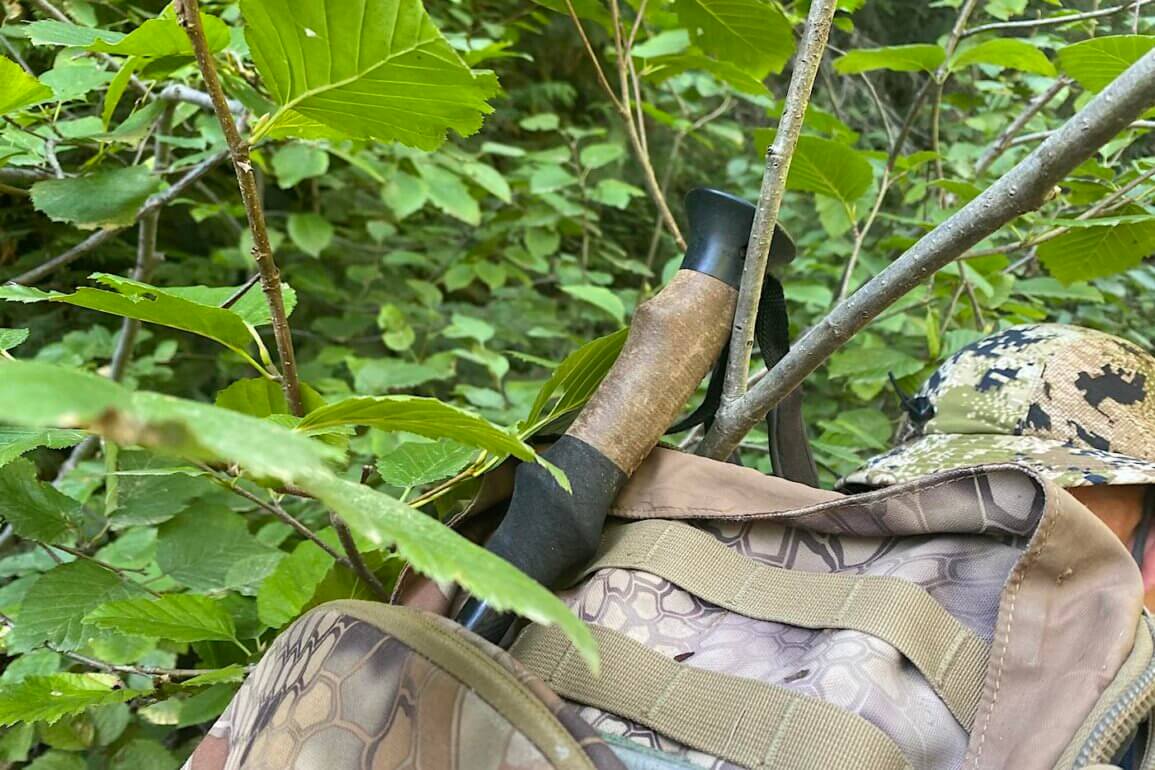If you’re a big game hunter, particularly a big game hunter who navigates rugged terrain over many miles, you might be ready to try trekking poles.
If you’re young and in great shape, you might think trekking poles are for sissies — and that’s not as an uncommon thought as you might think. In fact, PEAX Equipment has even named its line of trekking poles after the idea — Sissy Stix.
Because you might not be ready to embrace a relatively new expensive gear purchase, let’s cover the benefits of trekking poles for hunters:
Benefits of Hunting with Trekking Poles
- If you navigate very steep, rugged terrain, trekking poles help you maintain balance, which makes you significantly safer in sketchy situations you didn’t intend get into.
- If you wear a backpack that changes your center of balance, trekking poles are even more important.
- If you are successful in your hunt and you haul out meat in a backpack, trekking poles are sometimes critical to your ability to get the meat home — and you home uninjured.*
- If you have a sore muscle, a nagging joint, or age-related challenges, trekking poles sometimes make it possible to stay in the field doing what you love.
- Because trekking poles are collapsible, you can carry them in your hunting pack and use them only when you need them.
* Note: Have you ever fallen in the woods on steep terrain with a backpack full of 80+ pounds of elk meat? I have and it’s not fun. You don’t want to. Ever.
Two Basic Kinds of Trekking Poles
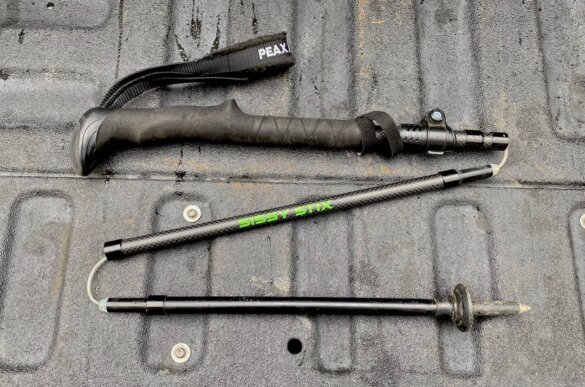
Trekking poles are usually made from high-quality aluminum or carbon fiber — or both. Aluminum is super durable but slightly heavier than carbon fiber.
Most trekking poles are telescoping in design. The two narrower bottom sections pull down from inside a thicker handle section. Built-in clamps let you adjust the height.
Z-style trekking poles usually have four sections instead of three. An interior cable runs inside the hollow tubes, which connect like tent poles. They stay connected through tension on the interior cable. The top section has some height adjustment just like telescoping trekking poles. Where is the “fourth” section? It’s an adjustable-length inner section that’s not noticeable at first glance.
Pros and Cons
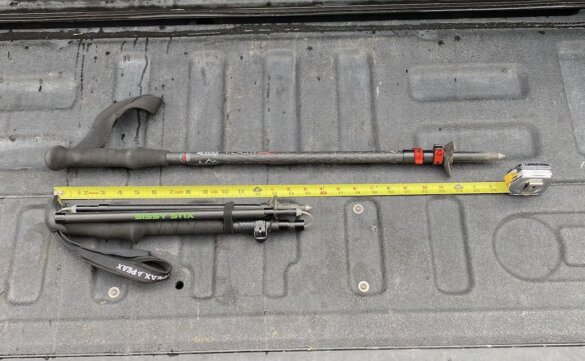
The key benefit to telescoping trekking poles is that they are easy to find and they are relatively inexpensive. The major flaw to telescoping trekking poles for hunters in forest and brushy terrain is the travel length. When fully nested, traditional trekking poles are still 24″ long. Sure, you can strap them to the outside of your hunting pack, but in many situations and in many packs, they’ll poke out over the top of the pack.
If you’re using traditional trekking poles that stick out over the top of your pack — even by just an inch — you’re going to get hung up when you try to duck under brush and branches. No way around it. It’s not only annoying, some branches won’t break and can throw you off balance in nasty terrain.
Z-style trekking poles, on the other hand, typically collapse down to around 15″ . . . which is short enough to stuff into most any day pack. Plus, they’re short enough to not extend past the top of your hunting pack.
The main drawback to Z-style trekking poles is that they are sometimes very slightly heavier than comparable quality trekking poles. In almost all instances, Z-style trekking poles are high-quality . . . and therefore don’t have many good less expensive entry-level competition.
Why Invest in Z-Style Trekking Poles?
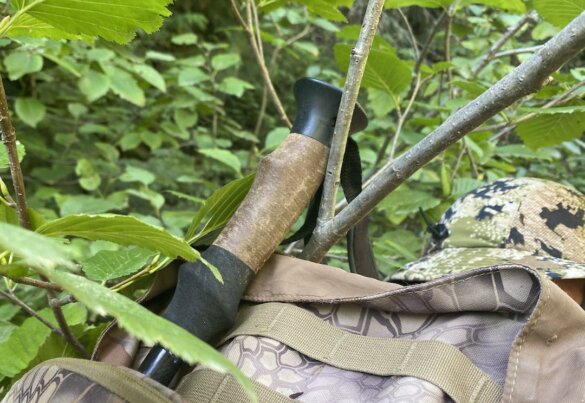
A trekking pole is only useful if you take it with you in the backcountry. Because telescoping poles are so long, I personally used to resist carrying trekking poles while archery elk hunting Idaho for many years. Where I hunt there is a lot of brush and branches and steep terrain, and getting hung up on trekking poles strapped to my pack led me to leave them behind on hunts where I should have had them with me.
Once I purchased the PEAX SISSY STIX Backcountry Z trekking poles, however, I now always carry at least one trekking pole with me (full Sissy Stix review here). I can tuck them into the side pocket of my Mystery Ranch Sawtooth 45 hunting pack. They never get caught on branches and I can easily deploy them for steep descents and ascents.
Just this September, I even used my Sissy Stix while hauling out my buddy’s bull elk — and that was a relatively straight-forward pack out. Because I was exhausted, however, the Sissy Stix made the haul much better.
Considerations for Now
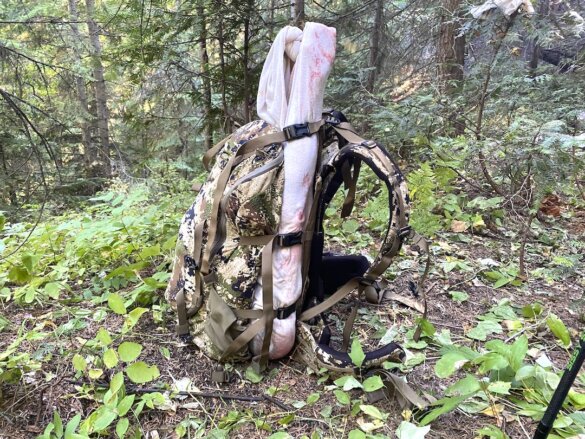
So, should you buy trekking poles for hunting or not? Here are a few considerations to help you make your decision:
If you’ve never used trekking poles, but you’re covering rugged, steep ground, consider investing in an entry-level set of trekking poles.
If you’re getting older or are hunting very rugged ground, save yourself a future injury or surgery and invest in a good set of trekking poles right now!
If you’re hard to shop for, trekking poles make great gifts for hunters.
Are Z-style trekking poles worth the cost? I believe so. I have zero regrets and I appreciate them on the mountain pretty much every day I hunt for elk in Idaho. In one particular rough situation this year, on steep ground with branches, loose duff and rolling rocks, I believe my Sissy Stix saved me from a nasty fall with a pinned leg. Maybe you’ve never had a moment of concern in the woods . . . but if you do have a moment where falling down would be very bad — and you don’t fall because of your trekking poles — I can pretty much guarantee you won’t cry about the cost of the trekking pole that saved you.
Get the Gear:
- PEAX SISSY STIX Backcountry Z — outstanding Z-style trekking poles purpose-built for backcountry hunters
- Black Diamond Pursuit FLZ Trekking Poles — Black Diamond makes some of the best trekking poles, just get the FLZ versions because they have easy length adjustments
- BlackOvis Crestone Collapsible Carbon Trekking Poles — competitive at full price, outstanding value when on sale
- PEAX SISSY STIX Backcountry PRO — excellent telescoping trekking poles built for hunters
- Cascade Mountain Tech Aluminum Trekking Poles — budget-priced, entry-level telescoping trekking poles, spare parts available if something breaks

